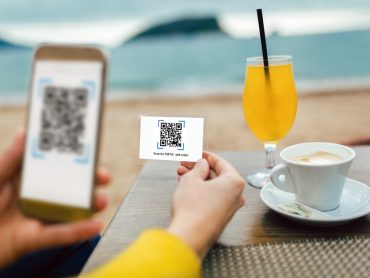How to humanize your hotel brand identity
Apple is big—the biggest company in the world in fact. It’s easy to look at such a massive corporate brand and say, “We should be more like them!” Correct, yes, but also naïve. After all, what can Apple, a cutting-edge phone and computer company, possibly offer to hoteliers?
As it turns out, quite a lot. One such piece of advice was recently spelled out bywww.marketingprofs.com. Apple’s stores are ergonomically designed to maximize human interaction. The Apple “Geniuses” all wear bright blue and easily identifiable T-shirts. But that’s nothing compared to the furniture orientation. Dominating the front are large and inviting tables with a sparse arrangement of products and pricing details. The stores are filled with employees, all out in the open and ready to talk shop. And when it’s time to pay the bill, Apple uses mobile cashier platforms as a substitute for bulky registers.
 |
| Larry Mogelonsky |
The other primary example cited was Zappos.com, which posted videos on various merchandise pages of passionate employees explaining what they like about a particular product. Since launching the video campaign in 2009, Zappos has reported a fivefold increase in customer conversion rate. This “spokesperson video” feature is also common practice in the real-estate business. Agents will perform a virtual walkthrough of a house or apartment, all while you follow their effervescent smiles and charismatic voices.
Brand identities
Rapport building, humanizing, enhancing social engagement or giving a personal narrative—call it what you will, but you cannot deny the power of a face and story behind a sale. The central takeaway: A brand is never just a product and a price, whether you are dealing with smartphones, online clothes shopping, property sales or hotels.
Apple and Zappos get it. A brand is an identity, and people want to be socially connected to the brands they support on an ongoing basis. This is a major problem I see with selling hotels through online travel agencies. There’s no identity; each page has the same layout with different text inserts and image thumbnails. When every page feels the same like this, brand identity is distanced from the consumer. The primary motivations then become location and price, and a consumer naturally will seek the most convenient or deepest discount around. In a race to the bottom like this, every hotel loses.
The key to restoring brand identity is by fostering a personal connection. For starters, why not put videos on your website with an affable manager discussing why he or she loves your hotel? Be on the lookout for passionate team members who can talk earnestly and positively about a specific aspect of your operations. For prospective buyers, such genuine stories might be just the ticket to sway their dollars. After all, visual cues are easier on the brain than reading.
A more time-consuming extension of this would be a live Web chat. Once logged on, managers could answer questions directly, sharing their passion and the product benefits throughout. Individual concerns could be dispelled, and customers would leave the conversation happier and more likely to make a purchase.
Fostering interaction
Furthermore, humanizing your brand is not just a cheap trick for first-time buyers. It goes miles toward customer loyalty, but most of the heavy lifting has to occur on-property with physical interactions. Your team has to be trained not only to be sociable, but also they must be strategically positioned to maximize guest-staff interactions.
For example, Apple stores are white-walled with beige furniture. On such a matte canvas, the Geniuses bright blue T-shirts pop. Plus, their employees are everywhere and unavoidable. Ask yourself: How do your staff uniforms catch the eye? Your colors should contrast with the décor just enough to stand out without leaning on kitsch. These two are probably out of your immediate control, but where you position the team is not.
Think about removing physical barriers that might impede an interaction. Apple did away with the rows of cashiers in place of a mobile solution. And what’s the hotel equivalent of a cash register? The front desk. As customary as it may be, that countertop is an obstacle to customer loyalty. I’m not insisting that you to drag out the sledgehammer, but what if one of your front-desk clerks or managers were to stand in front of the aforementioned reception kiosk? It’s 2012; have staff members check guests in via a tablet app.
Subtle but effective, placing your team in unobstructed points of contact is vital to humanizing your brand. It’s even more important for directors—those empowered to act swiftly upon individual requests and complaints—to lend their face to the lobby floor. Encourage a social vibe either through polite suggestion or perhaps with something more explicit, such as a regular manager’s reception. For example, host a complimentary late afternoon wine and cheese, with all guests invited to interact with those managers in attendance. This hits two birds with one stone—it improves loyalty and is a good morale booster for your team.
Speaking of food, food-and-beverage managers should strive, without being effusively invasive, to open a dialogue with patrons. They might already be in awe of your cuisine and service quality, or they might feel the opposite. By getting in the face time, being receptive to differing opinions and holding a constant desire for improvement, you’ll find that visitors will leave happier either way.
Additionally, social media plays a significant role in this process. Gone are the days when you can simply hide behind your corporate logo and advertise with a generic, objective voice. When it comes to fostering true business-to-consumer relationships, personality matters. This tenet holds true for both the physical as well as the electronic.
Instead of only hosting one branded Twitter account, why not get every one of your directors on the network with their smiling faces as profile pictures? Then, have them tweet, retweet and reply to items posted on the corporate account and to customers directly—putting a face behind the brand. This also can be applied to Facebook fan pages and LinkedIn. Get your managers online and sharing their passion with consumers.
These are just a few suggestions for humanizing your brand. Once you frame every aspect of your operations through this mentality, you’ll see that there are plenty of other opportunities to increase both first-time purchases and loyalty. And when in doubt, look to companies that continually achieve success in crowded markets despite their higher price points. There are lessons everywhere, but only if you keep an open mind.




